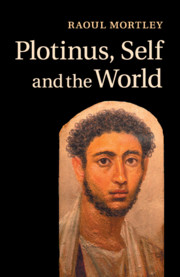Book contents
- Frontmatter
- Contents
- Preface
- Introduction
- 1 The individuated self and memory
- 2 Memory and forgetting
- 3 Ignorance, love and play
- 4 Plotinus’ Eros
- 5 The self: ‘and we too are kings’
- 6 Being and having
- 7 Self-knowledge
- 8 Art and the seduction of beauty
- 9 Face, image and the self
- Conclusion
- Bibliography
- Index
- References
8 - Art and the seduction of beauty
Published online by Cambridge University Press: 05 October 2014
- Frontmatter
- Contents
- Preface
- Introduction
- 1 The individuated self and memory
- 2 Memory and forgetting
- 3 Ignorance, love and play
- 4 Plotinus’ Eros
- 5 The self: ‘and we too are kings’
- 6 Being and having
- 7 Self-knowledge
- 8 Art and the seduction of beauty
- 9 Face, image and the self
- Conclusion
- Bibliography
- Index
- References
Summary
We have seen that the way up to the beautiful is not through the other, but through one's own. But what of the beauty scattered across the world in images and even in living faces: does it not assist in the voyage of the lover? Does the skill of the artist have anything of the transcendental about it? We will examine Plotinus’ attitude to the beauty around him, with some surprising results.
The rejection of art in the Tenth book of the Republic is well known, and it is always surprising for those who appreciate the thought of Plato. How can this great thinker and sorcerer of language deny that which is apparently part of himself, his own skill as an author? There seem to be two manoeuvres here. On the one hand, he rejects that techne which happens to give his writings their own particular magic, and all their seductive power over us, the readers; on the other, he denies that which obviously exercises an attraction for him and over him, so that we appear to be dealing with a kind of suppression or rejection of an element of his own person. The art of the poet includes Plato among its initiates, as author as well as spectator: he is at once the seducer and the seduced. Perhaps we are dealing with a deliberate irony in relation to himself.
- Type
- Chapter
- Information
- Plotinus, Self and the World , pp. 110 - 125Publisher: Cambridge University PressPrint publication year: 2013



